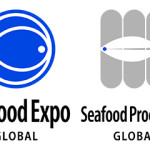When the team at High Liner Foods sat down to brainstorm new product lines 18 months ago, one of the company’s challenges was coming up with seafood items that could go beyond the typical dinner or lunch entrée format. The idea of pulled
“The advantages of pulled
Decker was looking for an opportunity to get into the snacking marketplace with a high-quality product. The salmon, slow cooked in a
“The judges look for uniqueness and great taste, and this product has both,” he said. “But they also look at marketability of a product in their selection, determining the likelihood that a product will become commercially successful, that it will be in the marketplace five years from now and that it will become one of the mainstays of the seafood industry.”
While the pulled
“We tend to put products into foodservice first because it enables us to test them in the market,” he said. “Retail is expensive
High Liner’s prowess at new-product development is evident this year, as it was the only company with two products among the list of finalists. Its second was Fish n Chips on a Stick, an item consisting of cod strips battered, rolled in fried potatoes, fried and skewered. The product was inspired by the trend towards handheld food products. Decker said
Another finalist at Seafood Expo North America was King & Prince Seafood’s “Sensations,” a line of blended crab and surimi targeted at foodservice operators wanting to serve premium seafood at an affordable price.
“Premium seafood items like scallops and jumbo lump crab continue to be expensive and have seasonality and sourcing issues,” said Sue Gurkin, director of innovation for the Brunswick, Ga.-based company. “For example, crab prices have been increasing significantly over the past two years and last spring there were shortages of jumbo lump crab, which meant operators were having to pull crab from their menus.”King & Prince’s patented technology enabled the development of a blend with the same flavor and texture as jumbo lump crab, but with improved handling and an affordable price. Research and development took 22 months from concept through launch and the team developed a phosphate-free product with a ‘clean’ label.
“These blends allow operators to offer these premium
There were some 72 contestants at the 2015 Seafood Expo North America, held 15-17 March, with products ranging from lobster butter to salmon burgers and fried shrimp. Interestingly, the new product range at the Seafood Expo Global in Brussels, held 21-23 April, is significantly different from what’s offered in Boston. Last year’s finalists included a paella dish by Delfin Ultracongelados in Ontigola, Spain, consisting of all the ingredients to make a traditional seafood paella at home. The best new foodservice product was a mussel powder by Vilsund Blue in Denmark, an additive-free flavoring powder used to season seafood dishes, sauces, poultry,
“The flavor profiles for products are quite different in Europe than in North America,” said Pat Shanahan of the Shanahan Group in Seattle, which coordinates both competitions. “The North American products are formulated for American tastes and eating styles. For example, the idea of portable food is very American. By contrast, the European competition is much more global and the taste profiles in Europe lean more towards traditional ways of eating fish and seafood.”





